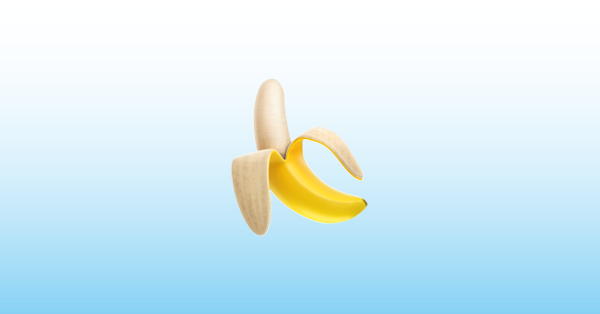In the fast-paced digital age, symbols and banana emoji have evolved into powerful tools of expression. Among them, the humble banana emoji (🍌) has journeyed far beyond its botanical and nutritional roots. Once simply a representation of a tropical fruit, the banana emoji has transformed into a multifaceted icon, weaving its way through internet culture, social commentary, marketing, memes, and even innuendo. From silly jokes to political undertones, the banana emoji has peeled its way into the modern cultural lexicon.
This article explores the curious case of the banana emoji—from its origins and literal meanings to its layered symbolism and sometimes controversial usage online. Let’s dive into how this curved yellow fruit became a cultural chameleon in the emoji universe.
🍌 The Literal Roots: The Banana as a Fruit
Before the rise of emoji, the banana was simply that—a fruit. Bananas are one of the world’s most consumed fruits, valued for their sweetness, portability, and nutritional benefits. Originally cultivated in Southeast Asia, bananas spread throughout the world, becoming dietary staples and agricultural icons in places like Central and South America, the Caribbean, and Africa.
Nutritionally, bananas are rich in potassium, vitamins B6 and C, and fiber. They are accessible, affordable, and often recommended for everything from workout recovery to aiding digestion. Their appeal transcends cultures, languages, and culinary traditions, which may explain why they made the cut when Unicode began digitizing food for global emoji use.
📱 Unicode & Emoji: Birth of the Banana Emoji
The banana emoji (🍌) was officially introduced in Unicode 6.0 in 2010, alongside a variety of other food-related emojis. Its design varies slightly across platforms—Apple’s version typically displays a peeled banana with a curved arc, while Android and other systems might show different peel orientations or stylization. Regardless of its rendering, the banana emoji is universally recognized.
Its primary and most innocent usage is clear: it represents a banana, either literally (when talking about the fruit, diet, or recipes) or metaphorically (as a symbol of health, energy, or tropical flair).
But as internet culture has demonstrated time and again, no emoji is safe from redefinition.
🤔 Beyond the Fruit: Layers of Symbolism
Once out in the wild, the banana emoji took on meanings far beyond the grocery list. It began to embody humor, flirtation, and even critique. Here are some of the most common symbolic uses of the banana emoji.
Phallic Symbolism
Let’s address the elephant in the room—or the banana in the chat.
Because of its shape, the banana has long been a visual euphemism for male genitalia. This association predates emoji but became magnified with the banana emoji’s widespread adoption. Often used alongside the peach (🍑) or splash (💦) emojis, 🍌 is frequently part of sexual innuendo, especially on platforms like Twitter, TikTok, and Instagram.
This symbolism is often used humorously or flirtatiously, but it can also tread into NSFW or inappropriate territory, especially when misused. This double entendre has made the banana emoji both playful and controversial.
Comedy & Absurdity
Bananas have a long-standing place in comedy. Think of the classic “slipping on a banana peel” trope—it’s goofy, exaggerated, and universal.
The banana emoji has inherited that absurdist vibe. It often appears in meme culture to punctuate surreal humor or nonsense. Posts that aim for randomness, dadaism, or sheer ridiculousness may include 🍌 purely for its whimsical shape or color.
For example, someone might tweet, “Just fought a dragon with a banana. Tuesday vibes. 🍌🔥🐉” — and in the context of meme culture, that kind of absurdity plays perfectly.
Pop Culture References
The banana emoji often shows up in pop culture contexts, both visually and symbolically. Think of the iconic Andy Warhol banana art used on the Velvet Underground’s album cover or the recurring banana motif in shows like “Arrested Development.”
Pop stars, brands, and influencers often use 🍌 in promotional posts or merchandise to suggest something cheeky, retro, or cool.
In the world of K-pop, for instance, emojis often represent idols, and a banana might be assigned to a performer with a quirky or sweet personality.
🌍 Banana Emoji and Global Meanings
Cultural context matters. The banana emoji doesn’t carry the same undertones everywhere.
In Latin America
Bananas (and plantains) are major agricultural exports and dietary staples. The banana emoji is often used straightforwardly to refer to recipes or agriculture—but it can also be loaded. In countries like Honduras and Guatemala, where U.S. companies like the United Fruit Company (now Chiquita Brands) had vast control over local economies, the term “banana republic” evokes a complicated colonial and economic history. The banana emoji can sometimes be used in political memes referencing corruption, neocolonialism, or economic exploitation.
In Asia
Bananas are associated with tropical fruits, but also play into stereotypes. For example, in Chinese and Korean internet slang, calling someone a “banana” (yellow on the outside, white on the inside) can imply that a person of Asian descent is “acting Western.” The emoji might be used satirically in these contexts—though it can also be controversial or offensive depending on intent.
In LGBTQ+ and Youth Subcultures
The banana emoji has been reclaimed in various subcultures as a symbol of playfulness, non-normative identity, and queer-coded humor. Its exaggerated symbolism fits well within drag culture, queer meme accounts, and Gen Z humor, where over-the-top visuals reign supreme.
💼 Marketing, Branding & the Banana Emoji
Brands are no strangers to the banana emoji. Given its vibrant look and quirky shape, it has been adopted in countless marketing campaigns—from smoothie chains and tropical vacation ads to lingerie brands and adult product lines.
A few notable examples:
Chiquita Banana
the real-life fruit giant, has embraced emoji marketing, occasionally using 🍌 in social campaigns, sometimes even partnering with emoji keyboard apps to promote fruit consumption among kids.
Fashion and cosmetics brands
like Too Faced or Urban Decay have used the banana emoji in bright, cheeky campaigns aimed at younger audiences.
Music industry marketing
has tapped into the emoji’s suggestive undertones, especially in the promotion of pop songs with flirtatious or tropical vibes.
But there’s a line. Some campaigns have drawn criticism for being too suggestive or for exploiting sexual innuendo without context or taste. As with all emojis, tone and platform matter immensely.
🧠 Psychology & Emoji Use: Why Bananas?
Why does the banana emoji work so well, anyway?
It’s not just because of shape or color. Studies on emoji use and non-verbal digital communication suggest people are drawn to images that are.
The banana checks all these boxes. It’s simple to draw, usually signals something fun or lighthearted, and can pair with a wide range of emojis—from faces to fruits to fireballs.
In addition, there’s something inherently funny about bananas. Psychologists even suggest the banana’s curve and symmetry make it visually amusing—an example of how form influences perception.
🚫 Controversy & Censorship
Like many emojis, 🍌 has also found itself at the center of moderation and censorship debates.
Social media platforms like Instagram and TikTok have had to crack down on emoji use in suggestive or explicit content, and the banana is often flagged as a part of this. Users have reported shadowbans or content removals for using 🍌 in sexually suggestive captions or hashtags.
Critics argue this blurs the line between humor and regulation, with platforms often failing to distinguish between legitimate uses (like discussing fruit) and innuendo. This raises questions about algorithmic moderation, digital expression, and free speech in the emoji era.
🛸 The Meme Future of 🍌
Will the banana emoji fade into obscurity? Not likely.
Its versatility, humor, and vibrant appearance make it an enduring figure in the emoji ecosystem. As digital language continues to evolve, 🍌 will likely keep growing in meaning, whether as a punchline, a protest symbol, or a flirtation tool.
We’ve already seen it become the star of absurdist memes (e.g., “banana for scale”), fake inspirational quotes, and even TikTok dance parodies. As internet trends get weirder and faster, the banana emoji is perfectly positioned to keep riding the wave.
🍌 Conclusion
From potassium-packed snack to postmodern punchline, the banana emoji is more than just a digital depiction of a fruit. It is a symbol that morphs with its context—sometimes silly, sometimes sexy, sometimes subversive. It captures the spirit of modern emoji culture: endlessly adaptable, visually fun, and deeply human.
So next time you toss a 🍌 into a group chat or tweet, take a moment to appreciate its strange, fascinating journey. It might just be the most surprisingly layered emoji on your keyboard.











+ There are no comments
Add yours